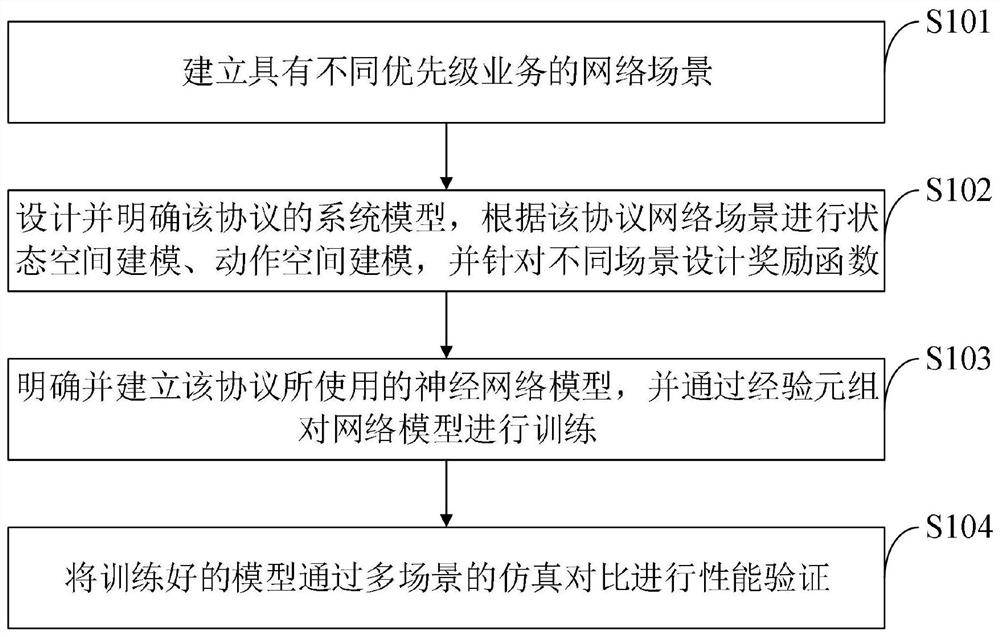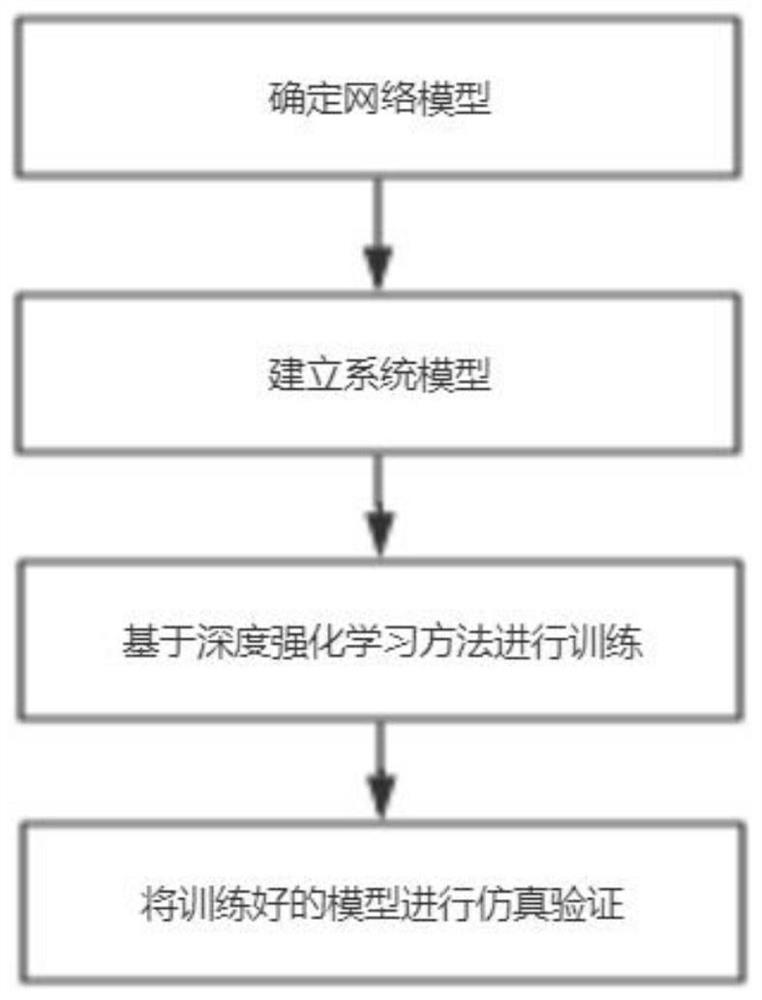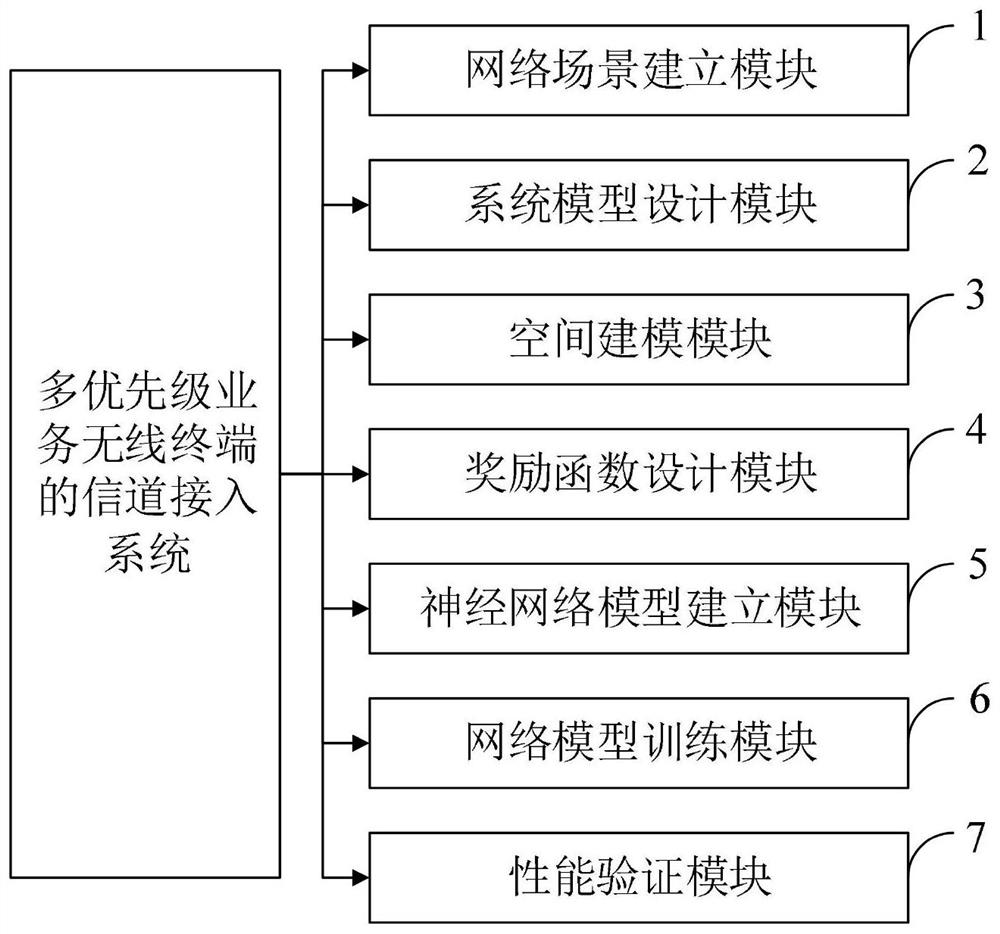Channel access method of multi-priority wireless terminal based on deep reinforcement learning
A channel access method and reinforcement learning technology, applied in the channel access field of multi-priority wireless terminals, to achieve the effect of improving throughput and reducing scheduling delay
- Summary
- Abstract
- Description
- Claims
- Application Information
AI Technical Summary
Problems solved by technology
Method used
Image
Examples
example 1
[0117] Example 1: In a transmission network with two priority services, the network scene includes a base station, a DRL-MAC node, and a TDMA node; the DRL-MAC node is always in a state of service to be transmitted (saturated service scene).
[0118] Figure 6(a) shows the throughput results when the DRL-MAC node and a TDMA node coexist in a saturated business scenario, and its goal is to achieve the optimal throughput of the system.
[0119] Through Fig. 6 (a) can see that when the frame length is 10, the throughput result when the time slot N occupied by TDMA changes from 2 to 9. The slash-filled part and the solid-color filled part in the histogram indicate the throughput of the DRL-MAC node and the TDMA node, respectively. The circular marked dotted line is the total throughput simulated under the coexistence of DRL-MAC nodes and TDMA nodes, that is, the total throughput of the system. The diamond-marked dashed line represents the value of the theoretically optimal system ...
example 2
[0122] Example 2: In a transmission network with two priority services, the network scenario includes a base station, a DRL-MAC node, and a q-ALOHA node; the DRL-MAC node is always in the state of having services to transmit (saturated service scenario ).
[0123] Figure 6(c) shows the throughput results when the DRL-MAC node and a q-ALOHA node coexist in a saturated business scenario, and its goal is to achieve the optimal throughput of the system.
[0124]Figure 6(c) shows the throughput results of q-ALOHA when the access probability q varies from 0.2 to 0.9 when q-ALOHA nodes coexist with DRL-MAC nodes in a saturated traffic scenario. Figure 6(c) shows the throughput of the DRL-MAC node and the q-ALOHA node in the slash-filled part and the solid-color filled part, respectively. The circular marked dotted line is the total throughput of the simulation under the coexistence of DRL-MAC nodes and q-ALOHA nodes, which means the total throughput of the system. The diamond-marke...
example 3
[0129] Example 3: In a transmission network with two priority services, the network scene includes a base station, a DRL-MAC node, and a TDMA node; the DRL-MAC is in an unsaturated service scene.
[0130] The so-called unsaturated business scenario means that one data packet arrives in each time slot, and the arrival rate of data packets with different priorities is different. In this paper, the arrival probability of high-priority data packets is defined as 0.3, and the arrival probability of low-priority data packets is 0.7, after the data packets of different priorities arrive, they enter the data packet queues corresponding to different priorities and wait in line. The data packets of a certain amount of corresponding priority are entered into the queue respectively (in the present invention, the high and low priority queues are respectively initialized to enter 5 data packets in the queue), so as to avoid the situation that the access service queue is empty when the traini...
PUM
 Login to View More
Login to View More Abstract
Description
Claims
Application Information
 Login to View More
Login to View More - R&D
- Intellectual Property
- Life Sciences
- Materials
- Tech Scout
- Unparalleled Data Quality
- Higher Quality Content
- 60% Fewer Hallucinations
Browse by: Latest US Patents, China's latest patents, Technical Efficacy Thesaurus, Application Domain, Technology Topic, Popular Technical Reports.
© 2025 PatSnap. All rights reserved.Legal|Privacy policy|Modern Slavery Act Transparency Statement|Sitemap|About US| Contact US: help@patsnap.com



